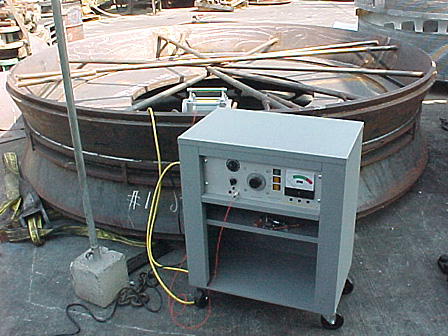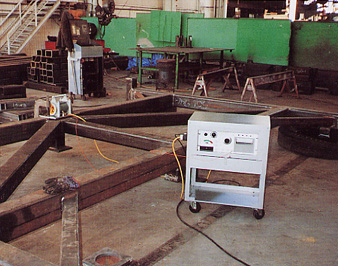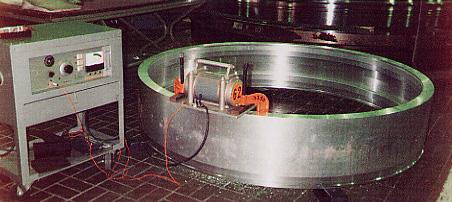Capabilities
 FORMULA 62 Resonant Vibration Method for reducing Residual Stresses in Welded or Machined Fabrications FORMULA 62 Resonant Vibration Method for reducing Residual Stresses in Welded or Machined Fabrications
What Are Residual Stresses and Where Do They Come From?
For
many people involved in the metalworking trades, the subject of stress
relief is something they are not well versed in. As a result, stress
relief is a subject they would just as soon like to avoid. With a
little technical assistance, the average layman can get a basic
understanding of residual stresses and how to deal with them. With this
knowledge, he will be better prepared to evaluate shop problems and
find a solution that is effective. The following information is
designed to answer some of the most frequently asked questions about
stress relieving.
Residual
stresses, by definition, are those stresses in an elastic body that is
free from external force or restraint and temperature gradients. An
incompatibility of regions in the metal created by non-homogenous
plastic deformation is the principal cause of these internal stress
systems, whether they are in an individual part or in an assembly of
parts. This mismatch or misfit between adjacent regions of the same
part distorts the neighboring regions. This condition can be either
extremely damaging or very beneficial to the part depending on the
magnitude and direction. Compressive stresses created by shot peening
can be good while tensile stresses created during welding can be bad.

Residual
stresses are hard to visualise, difficult to measure and extremely
difficult to calculate or predict, yet they are just as important in
the function of a part as are externally applied forces that are more
easily measured and calculated.

Residual
stresses are fundamentally introduced into the material in one or more
of the following ways: thermal, metallurgical, mechanical and chemical.
Since these are the processes that make up our metalworking trades, it
is only right to assume that, at some point in time, a stress relief
treatment may be required.

|